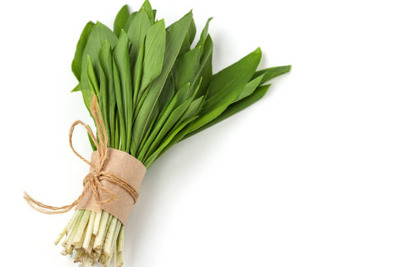
Introduction to Ramps Medicinal Uses
Step into the captivating world of ramps and discover their medicinal uses! Explore the rich history and diverse applications of this humble yet powerful plant in traditional and alternative medicine. From ancient remedies to modern discoveries, embark on a journey through the remarkable healing properties of ramps. Whether you’re a seasoned herbalist or simply curious about nature’s pharmacy, join me as we uncover the secrets of ramps and their medicinal wonders together!
Brief Description, Origin, and History of Ramps
Ramps, also known as Allium tricoccum, originate from North America. Indigenous peoples have cherished ramps for centuries due to their culinary and medicinal properties. European settlers later incorporated ramps into their cuisine, particularly in the Appalachian region. Ramps symbolize a deep connection to the land and are harvested in spring. Despite their popularity, ramps face threats from habitat loss and overharvesting. Conservation efforts aim to protect wild populations and promote sustainable harvesting practices.
All About Ramps for Health
Ramps are packed with nutrients like vitamin C, vitamin A, and folate. These vitamins support immune function and cell growth. Ramps contain antioxidants that reduce inflammation and protect against disease. Sulfur compounds in ramps aid digestion and detoxification. Allicin in ramps promotes heart health by lowering blood pressure. Ramps also possess mood-boosting properties and may protect against cancer. Consuming ramps supports sustainable and ethical eating practices.
Common Applications of How Ramps Are Used
Ramps Medicinal Uses find their way into various culinary creations, enhancing both flavor and nutrition. Here are some common ways ramps are used:
- Incorporate ramps into salads: Add a burst of freshness and a hint of garlic flavor to your favorite salads by tossing in chopped ramps.
- Sauté ramps with other vegetables: Create a delicious side dish by sautéing ramps with seasonal vegetables like asparagus, mushrooms, or spinach.
- Blend ramps into pesto: Elevate your pasta dishes by blending ramps with nuts, olive oil, and Parmesan cheese to make a flavorful pesto sauce.
- Grill ramps for a smoky flavor: Bring out the natural sweetness of ramps by grilling them alongside your favorite meats or seafood.
- Pickled ramps for tangy goodness: Preserve ramps by pickling them in vinegar, sugar, and spices for a tangy condiment that pairs well with cheese, charcuterie, or sandwiches.
- Incorporate ramps into soups and stews: Add depth of flavor to soups and stews by adding chopped ramps during cooking for a savory boost.
- Use ramps as a garnish: Sprinkle thinly sliced ramps over finished dishes to add a pop of color and a burst of fresh flavor.
Tips for Taking Ramps Effectively
To make the most of Ramps Medicinal Uses nutritional benefits, here are some tips for incorporating them effectively into your diet:
- Start with small amounts: If you’re new to ramps, start with a small quantity to gauge your tolerance and enjoyment of their flavor.
- Experiment with cooking methods: Try different cooking methods like grilling, sautéing, or roasting to discover your favorite way to prepare ramps.
- Pair ramps with complementary ingredients: Combine ramps with ingredients that complement their flavor, such as bacon, eggs, cheese, or herbs.
- Balance ramps with other flavors: Balance the strong flavor of ramps by pairing them with milder ingredients like potatoes, rice, or pasta.
- Don’t overcook ramps: To preserve their delicate flavor and texture, avoid overcooking ramps, as they can become mushy and lose their vibrancy.
- Use ramps in moderation: While ramps offer numerous health benefits, it’s essential to consume them in moderation as part of a balanced diet.
- Get creative with ramp recipes: Don’t be afraid to get creative and experiment with new ramp recipes to keep things exciting in the kitchen.
What Are the Characteristics of Good-Quality Ramps
When selecting ramps for culinary or medicinal purposes, look for the following characteristics to ensure you’re getting the best quality:
- Firm and vibrant leaves: Choose ramps with crisp, green leaves that show no signs of wilting or yellowing, indicating freshness and vitality.
- Fresh, white bulbs: Opt for ramps with firm, white bulbs that are free from blemishes or soft spots, as these are signs of deterioration.
- Strong, distinct aroma: Quality ramps should have a pungent garlic-like aroma that is indicative of their flavor and potency.
- No signs of decay or mold: Avoid ramps that show any signs of decay, mold, or insect damage, as these can affect their taste and safety for consumption.
- Harvested sustainably: Choose ramps that have been harvested responsibly and sustainably, ensuring the preservation of wild populations and ecosystems.
- Locally sourced: Whenever possible, opt for ramps that are locally sourced or grown, supporting local farmers and reducing environmental impact from transportation.
- Stored properly: Ensure that ramps are stored properly to maintain their freshness and quality, whether refrigerated or preserved through freezing or drying methods.
What Are Some Interesting Facts About the Benefits of Ramps Essential Oil:
Ramps essential oil offers a wide range of benefits, from skincare to aromatherapy. Let’s explore some interesting facts about the benefits of ramps essential oil:
- Ramps essential oil boasts potent antimicrobial properties, making it a valuable ingredient in natural skincare products.
- In aromatherapy, ramps essential oil can help uplift the mood and reduce stress when diffused or added to bathwater.
- Ramps essential oil may provide respiratory support by clearing congestion and soothing coughs.
- Topical application of ramps essential oil can moisturize dry skin and reduce inflammation.
- Ramps essential oil can also promote hair health by stimulating the scalp and adding shine to the hair.
- Due to its antibacterial properties, ramps essential oil can be used as a natural deodorant to neutralize odor-causing bacteria.
- Ramps essential oil contains compounds that repel insects, making it a useful ingredient in insect repellent formulations.
How Can You Create Your Home Remedy with Ramps:
Integrating ramps into homemade remedies is a rewarding way to harness their therapeutic properties. Here are some ways to create your own home remedies with ramps:
- Infuse ramps into oil or vinegar for a flavorful addition to dressings, marinades, and sauces.
- Brew ramps tea for a soothing beverage that supports digestion and boosts immunity.
- Create a ramps poultice to soothe inflammation, insect bites, or minor wounds.
- Inhale ramps essential oil steam to alleviate respiratory discomfort and promote relaxation.
- Add ramps essential oil or ramps-infused oil to a warm bath for a rejuvenating soak.
- Use ramps as a seasoning or ingredient in various culinary dishes for added flavor and nutrition.
- Experiment with different preservation methods like freezing, drying, or pickling to enjoy ramps year-round.
How Do You Properly Store and Preserve Ramps for Long-Term Use:
Proper storage and preservation techniques are crucial for maximizing the shelf life of ramps. Here’s how to store and preserve ramps effectively:
- Refrigerate fresh ramps to prolong their freshness and prevent wilting.
- Freeze ramps for longer-term storage, ensuring they remain viable for up to six months.
- Dry ramps to create a shelf-stable ingredient that can be rehydrated as needed.
- Pickle ramps in vinegar to preserve their tangy flavor and enjoy them as a condiment.
- Infuse ramps into oil or vinegar to create a flavorful ingredient for cooking and dressing.
- Vacuum seal ramps to maintain their freshness and prevent spoilage in the refrigerator or freezer.
- Ferment ramps to enhance their flavor and nutritional value while extending their shelf life.
Who Should Avoid Ramps and Any Contraindications of Ramps?
While ramps offer numerous health benefits and culinary delights, certain individuals should exercise caution or avoid consuming ramps altogether:
- Individuals with Allium Allergies: People allergic to plants in the Allium genus, such as onions, garlic, and leeks, may also react to ramps. Symptoms like itching, swelling, hives, or difficulty breathing may occur. It’s crucial for those with known Allium allergies to avoid ramps to prevent adverse reactions.
- People Taking Blood-Thinning Medications: Ramps contain natural compounds called salicylates, which thin the blood. Therefore, those taking blood-thinning medications or with bleeding disorders should be cautious with ramps. Excessive consumption may increase bleeding risk or interfere with anticoagulant effects.
- Those with Gastrointestinal Sensitivities: Some may experience gastrointestinal discomfort, like bloating or indigestion, after consuming ramps, especially raw or in large amounts. Those with sensitive stomachs or gastrointestinal conditions like irritable bowel syndrome (IBS) or gastroesophageal reflux disease (GERD) may need to limit ramp intake to prevent digestive issues.
- Pregnant and Breastfeeding Women: Although ramps are generally safe, caution is advised for pregnant and breastfeeding women due to limited research on ramps during pregnancy and lactation. Consulting a healthcare professional before incorporating ramps into the diet is advisable to ensure safety for both mother and baby.
- Individuals with Kidney Disorders: Ramps contain oxalates, which can contribute to kidney stone formation. People with a history of kidney stones or kidney disorders may need to moderate ramp consumption to reduce the risk of kidney stone development.
- Children and Infants: Due to the potent flavor and potential allergenic properties of ramps, introducing them gradually into children’s diets is recommended, if at all. Careful observation for signs of allergic reactions or digestive issues is crucial, especially if there’s a family history of allergies or sensitivities to Allium plants.
By being mindful of these contraindications and consulting healthcare professionals if there are concerns, individuals can safely enjoy the culinary and health benefits of ramps while minimizing the risk of adverse reactions or complications.
Practical Tips for Integrating Ramps into Your Life
To incorporate ramps into your diet, start with small amounts and gradually increase. Experiment with different cooking methods to find your favorite. Preserve ramps by freezing or drying for year-round use. Consider growing ramps at home for a sustainable supply. When foraging for ramps, harvest responsibly to protect wild populations. Share ramp recipes and cooking tips with friends and family to spread the love.
Conclusion
In conclusion,Ramps Medicinal Uses offer a plethora of health benefits and culinary delights. By incorporating ramps into your diet, you can enhance your overall well-being and support sustainable food practices. Whether you enjoy them raw or cooked, ramps add flavor and nutrition to any dish. So why not embrace the wild wonders of ramps and embark on a culinary adventure? With their rich history and vibrant flavors, ramps are sure to become a staple in your kitchen. So go ahead, indulge in the magic of ramps and nourish your body with nature’s bounty.
FAQs about Ramps Medicinal Uses
What are ramps? Ramps are wild-growing plants with broad, smooth leaves and onion-like bulbs, prized for their pungent flavor and culinary versatility.
Where do people find ramps? People find ramps in North America’s wooded areas with moist, rich soil, growing in dense clusters in forests, along stream banks, and in other shaded, wooded environments.
When do ramps come into season? Ramps come into season in the spring, usually from March to June, depending on the region, emerging from the ground as the weather warms up.
How do people harvest ramps? People harvest ramps sustainably by carefully digging up the entire plant, including the bulb and roots, using a small trowel or knife, ensuring to leave behind some ramps to allow for reproduction and replenishment.
How do people cook with ramps? People cook with ramps in various ways, such as sautéing, grilling, roasting, pickling, or adding raw to salads, soups, stir-fries, and omelets, utilizing their strong, garlicky flavor.
Are ramps nutritious? Yes, ramps are nutritious, containing vitamins, minerals, and antioxidants, high in vitamin C, vitamin A, folate, and other nutrients supporting immune function, heart health, and overall well-being.
Can people freeze or preserve ramps? Yes, people can preserve ramps by freezing, drying, pickling, or fermenting, blanching them briefly in boiling water before freezing, air-drying them until completely dehydrated, preserving them in a vinegar-based brine, or lacto-fermenting them to enhance flavor and preservation.
